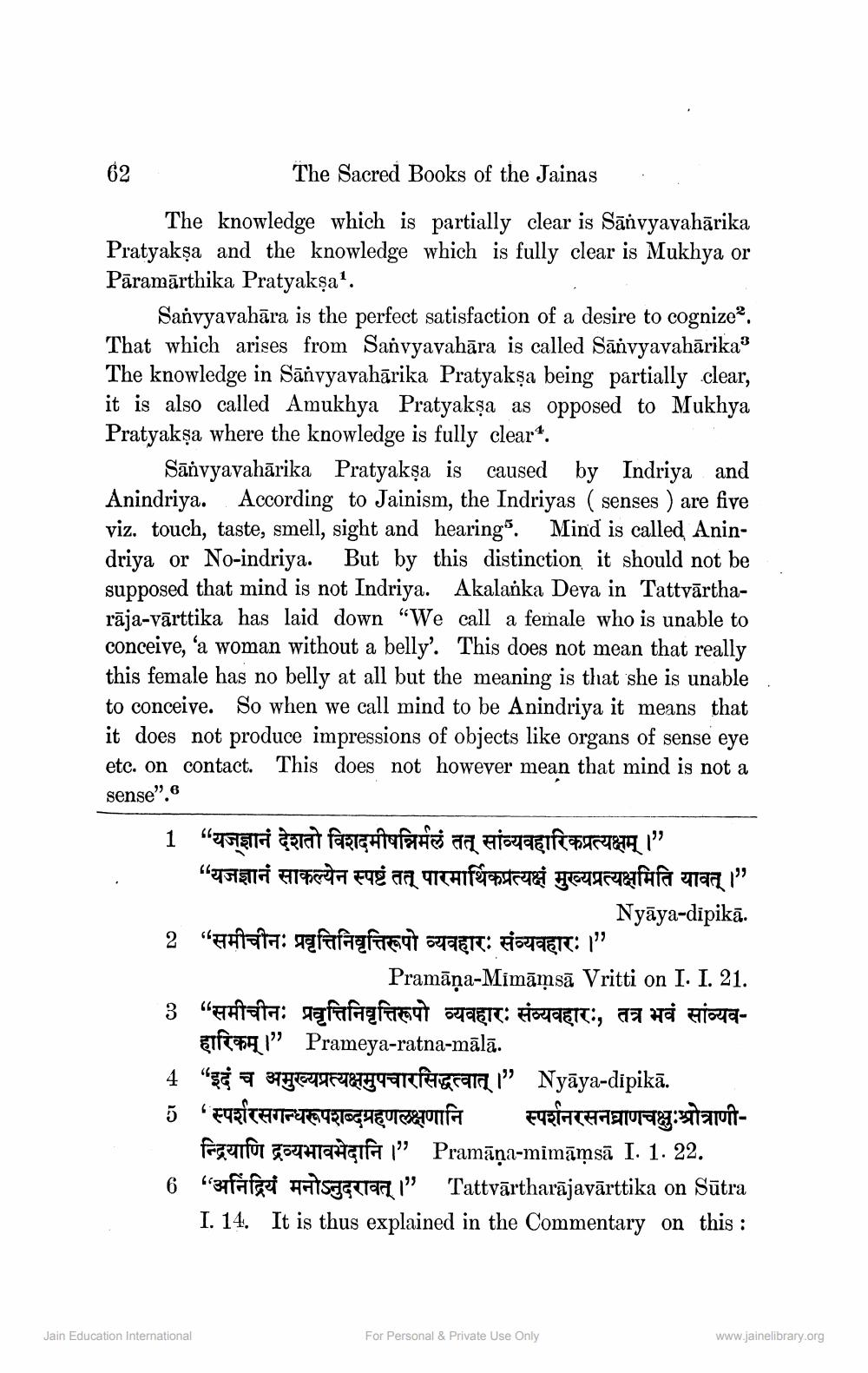________________
62
The Sacred Books of the Jainas
.
.
The knowledge which is partially clear is Sānvyavahārika Pratyakșa and the knowledge which is fully clear is Mukhya or Pāramārthika Pratyakşa'.
Sanvyavahāra is the perfect satisfaction of a desire to cognize?. That which arises from Sanvyavahāra is called Sānvyavahārika The knowledge in Sānvyavahārika Pratyakşa being partially clear, it is also called Amukhya Pratyakşa as opposed to Mukhya Pratyakșa where the knowledge is fully clear.
Sānvyavahārika Pratyakşa is caused by Indriya and Anindriya. According to Jainism, the Indriyas ( senses ) are five viz. touch, taste, smell, sight and hearing”. Mind is called Anindriya or No-indriya. But by this distinction, it should not be supposed that mind is not Indriya. Akalanka Deva in Tattvārtharāja-vārttika has laid down “We call a female who is unable to conceive, ‘a woman without a belly'. This does not mean that really this female has no belly at all but the meaning is that she is unable to conceive. So when we call mind to be Anindriya it means that it does not produce impressions of objects like organs of sense eye etc. on contact. This does not however mean that mind is not a sense". 6
1 "seni asrat razgaituerte aq AjoyaEI9464274, 1" “यजज्ञानं साकल्येन स्पष्टं तत् पारमार्थिकप्रत्यक्षं मुख्यप्रत्यक्षमिति यावत् ।"
Nyāya-dipikā. 2 "Fateta: nafarfagittant yaert: FETETT: 1"
Pramāņa-Mimāmsā Vritti on I. I. 21. 3 "समीचीनः प्रवृत्तिनिवृत्तिरूपो व्यवहारः संव्यवहारः, तत्र भवं सांव्यव
Ef74514_1" Prameya-ratna-mālā. 4 "gea STEELFTHYLrfagrara” Nyāya-dipikā. 5 'स्पर्शरसगन्धरूपशब्दग्रहणलक्षणानि स्पर्शनरसनघ्राणचक्षुःश्रोत्राणी
fargenfot gothraHÇifa 1" Pramāņa-mimāṁsā I. 1. 22. 6 kifáradt Alsgaraqi" Tattvārtharājavārttika on Sūtra
I. 14. It is thus explained in the Commentary on this :
Jain Education International
For Personal & Private Use Only
www.jainelibrary.org




